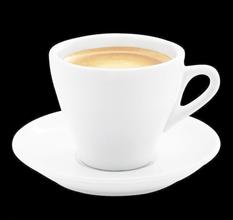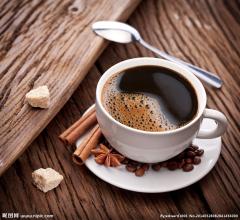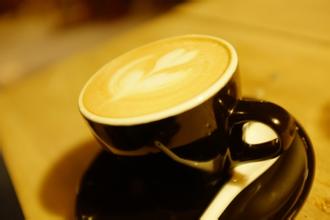Starbucks is eyeing the ready-to-drink coffee market, and this doughnut seller is coming with Coca-Cola.
The ready-to-drink coffee market seems to be quite lively this year.
First, Starbucks teamed up with Kang Shifu to launch four domestic versions of bottled Frappuccinos for its second-largest battleground Chinese market, and then Coca-Cola joined the famous American doughnut chain Dunkin' Donuts to announce that it would launch Dunkin' Donuts ready-to-drink coffee, which is a combination of retail brands and restaurant chains, is it a coincidence?
Star Frappuccino with "Chinese flavor"
When it comes to bottled Starbucks, you must have seen it earlier, but it is an imported product from the United States with very limited production and low coverage. After reaching a cooperation with Master Kang, Starbucks will be mainly responsible for product research and development, while production and sales will be controlled by Master Kang with excellent distribution ability. It is reported that supermarkets, convenience stores and e-commerce will be the key channels. In terms of price, Starbucks' guidance price for new products is more than 15 yuan, and the specific price is determined by the channel vendors themselves. The price of 16-20 yuan successfully takes Starbucks ready-to-drink coffee away from the fiercest battlefield of China's existing ready-to-drink coffee market (4-7 yuan bottled coffee).
As for increasing investment in ready-to-drink coffee, Starbucks said, "instant coffee is also an extension of Starbucks store business."
And if you have read the data of Starbucks' recent store opening in China, you may be able to better understand Starbucks' ambitions for the Chinese market. Citing data from DT Financial reports, it is not difficult to find that Starbucks has been rapidly capturing a large wave of third-and fourth-tier cities in the past five years:
After 2011, Starbucks began to develop the third and fourth lines, especially the more grass-roots ones: since 2015, the third and fourth lines accounted for 5 and 18 of Starbucks'23 cities'"new members" respectively, of which only in 2011 began to embrace Starbucks dad's fourth-tier cities. the average annual compound growth rate of stores in recent years has reached an astonishing 94.4%. Obviously, "channel sinking" is a major strategy for Starbucks store expansion in China in recent years. With Master Kang's blessing, bottled domestic Frappuccino, as the carrier of Starbucks brand, can undoubtedly further infiltrate everywhere and contribute to the maintenance of each terminal.
In addition, the rapid growth of the instant coffee market is undoubtedly an important reason for Starbucks' decision to increase investment.
There are two figures that make China's ready-to-drink coffee market delicious and rich: first, China's ready-to-drink coffee and energy drink market is worth US $6 billion and is expected to grow by a further 20% in the next three years. China's ready-to-drink coffee has a compound growth rate of 34.2%. Second, instant coffee (71.8%), which now dominates the mainstream market, is facing challenges, and the share of instant coffee is expected to fall by more than 5% to 66% in 2019, which undoubtedly provides considerable room for growth for instant coffee with a market share of 18.1%.
What we can see is that Wa, Nestl é, Suntory, Unification, Yibao and Coca-Cola have all launched their own ready-to-drink coffee products in recent years, among which Nestl é is still the leader in the instant coffee market. The relatively high pricing of Starbucks bottled coffee helps it avoid direct competition with Nestl é to some extent, but on the other hand, it also means that after leaving aside the store experience, whether Starbucks coffee itself is different and attractive can withstand the challenge of high prices.
Can Dunkin' Donuts+ Coca-Cola catch up with Starbucks + Pepsi?
It is clear that the attraction of instant coffee is not limited to the Chinese market. Almost at the same time as China Weixing Frappuccino went public, doughnut seller Dunkin' Donuts announced a partnership with Coca-Cola, which was interpreted by many foreign media as a pairwise war between Dunkin' Donuts VS Starbucks and Coca-Cola VS Pepsi.
Although it is a doughnut sign, Dunkin' Donuts, founded in 1950, is one of the largest coffee companies in the world, with more than 12000 stores in 36 countries. However, Dunkin' Donuts's ready-to-drink coffee partnership with Coca-Cola actually comes a little late compared to the partnership reached between Starbucks and Pepsi on bottled coffee 20 years ago.
The coffee category accounts for 50 per cent of Dunkin' Donuts's total sales in the US. As for the introduction of bottled coffee, CEO Nigel Travis said that maybe the ready-to-drink coffee in the freezer will slightly hurt the sales of ice coffee in the store, but would rather be so. "We don't want our customers to go to buy competitors' coffee after closing every day." Coca-Cola's entry is easier to understand. In addition to coffee, it has also made a lot of efforts in instant tea recently. After all, it thinks that its old rival Pepsi United Lipton is occupying a huge market share.
Compared with soda and bottled water, the sales of bottled coffee are really small, largely because consumers prefer freshly brewed hot coffee. Still, the US sold $2.54 billion of ready-to-drink coffee last year and grew by 10 per cent for the fourth year in a row.
At present, Starbucks and Pepsi jointly launched ready-to-drink coffee accounts for 75% of the market in the United States, but is there any chance of catching up with Dunkin' Donuts with Coca-Cola?

Important Notice :
前街咖啡 FrontStreet Coffee has moved to new addredd:
FrontStreet Coffee Address: 315,Donghua East Road,GuangZhou
Tel:020 38364473
- Prev

Intelligent coffee brewer Gina allows you to experience three different kinds of coffee making.
Coffee is essential for sleepy office workers during the day, so high-tech coffee brewing methods must bring a lot of convenience to life. Goat Story has launched a smart coffee brewer, Gina, which automatically brews a cup of coffee in the morning and tells you how to make coffee and tips via APP, a mobile phone connected to Bluetooth. Intelligent coffee brewing
- Next

Li Keqiang's red packet and Cook's American coffee
It is a tacit secret among entrepreneurs to want American concentration instead of cappuccino. Espresso mixed with water, there is a pure bitter coffee, but also with a little bit of acid, a little bit of sweetness, aroma contains an aftertaste. From October 12 to 19, 2016, the National Mass Entrepreneurship Innovation week was launched in Shenzhen and Beijing. This year, the home court of mass entrepreneurship and innovation week settled in Shenzhen for the first time
Related
- What effect does Italian American coffee with filter paper have? Will coffee taste better if it is put on filter paper at the bottom of the powder bowl?
- What is the color difference in coffee beans? What are the characteristics of honey processed coffee beans? Why are the anaerobically treated coffee beans uneven in color?
- How does novice Xiaobai quickly get started and make coffee? Newbies learn to make coffee by hand and share the specific steps and process process!
- Costa tea has a shelf life of 100 years?! Expert: Unable to verify
- It's a huge uproar! American milk addition was rejected by Manner employees?!
- Mocha pot coffee bean recommendations| How fine and how much powder should be used for grinding? What parameter ratios do I need to use to make milk with Mocha pot coffee?
- What are the characteristics of the world's top ten coffee beans treated with Costa Rica honey? How to make black honey kadura from Tarazhu Pilon Processing Plant taste good?
- How to make deep-roasted coffee? What grinding water temperature does authentic Jamaica Blue Mountain No. 1 coffee use to brew it well?
- Selected high-grade rose summer coffee flavor tasting guide Why Panama rose summer has the aroma of flowers and fruits
- What equipment does a novice Xiaobai need to buy to learn to make coffee? Filter cup electronic scale bean grinder manual flushing pot purchase guide

